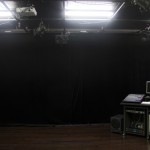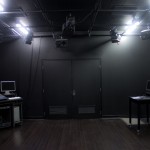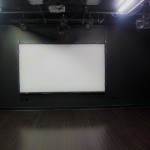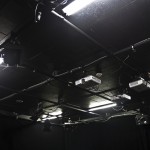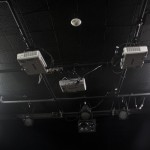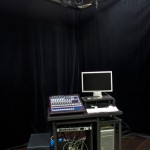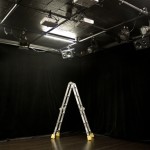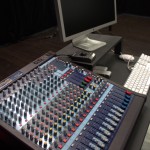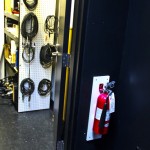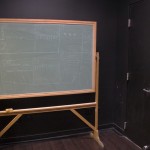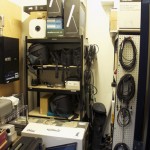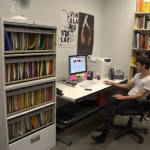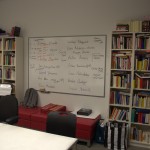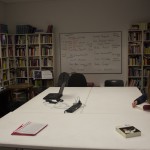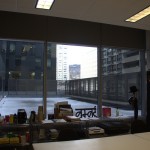matralab
matralab is a research space of inter-x art directed by Sandeep Bhagwati at Concordia University in Montréal. We are dedicated to using interdisciplinary art practice to bridge the gap between emerging art forms and their aesthetic reflection.
Our research is leading to the establishment of a practical and theoretical framework for the creation and evaluation of interdisciplinary, intercultural, intermedia and interactive art.
Creating a New Artistic Language
As our lives are becoming more digitalized and more globalized, so is art. Art today cannot be contained within any one culture, discipline or medium: Composers make films, actors use wearable computers, artists design miming robots, Indian traditional dancers compose real-time electronic music, and so on. Sometimes all these things happen simultaneously, in one space.
Canada Research Chair Sandeep Bhagwati studies how these bewildering new art forms work. He believes that the separation of the arts into disciplines is out of date. In our everyday lives we manage to juggle so many different forms of experience, using most of our senses most of the time. Bhagwati asks why shouldn’t our art be like that too? And, perhaps most importantly, how can we make this new art accessible to everyone?
As a composer, Sandeep Bagwati has produced music that brings together influences from classical and contemporary cultures, including the cultures of India, China, the Arabian world and the West. His artistic expression, which is deeply influenced by scientific thinking, has taken on diverse forms – from opera and concert music to museum exhibitions, from video dance and experimental radio art to works exploring the properties of social and public space, as well as interactive internet art.
As a Canada Research Chair, Sandeep Bhagwati explores the possibilities of a new interdisciplinary and intercultural artistic language with his colleagues at Concordia University. Just as opera once integrated all artistic forms of expressions of its age and culture, the new artistic language will enable artists to create – and audiences from diverse backgrounds to understand – the clashes and subtle interplays of different sensibilities, thus helping us all to cope with the challenges and delights of personal and social diversity in intuitively satisfying ways.
The AGNI Methodology
One of the critical issues in Research/Creation, closely tied to its situation as a recently emerging type of research, is the absence of an established and widely accepted research/creation methodology. While the arts on the one hand, and musicology, art theory etc. on the other have, of course, developed their own coherent and rigorous methodologies, these are not easily compatible and have proven to be quite resilient towards attempts at transfer. Part of this resilience may be rooted in e.g. the obvious differences in the role of knowledge production (central in research, collateral in the arts), the different role of peer-audiences (again: central to research, peripheral to the arts), the almost antithetical role of originality and non-conformity (central to the arts, collateral to research), the importance of pragmatic problem solving (essential in the arts, dubious in research) etc.
In response to this problem, Sandeep Bhagwati in 2005 developed the iterative AGNI research/creation methodology, loosely based on the RSVP Cycle Theory of Collective Creativity outlined by landscape architect Lawrence Halprin in the late 1960s.[1] In his model, Halpern developed effective methods to integrate both the creator’s and the „recipient’s/user’s“ perception of a work of public art. These methods, slightly adapted, are extremely useful for integrating both the researcher’s (i.e. the „creators“ of the analysis) and the artist’s/ art form’s points of view into a coherent perspective.
Find us
matralab is located in the EV building, Concordia University at 1515 ste Catherine St Ouest. Click here for detailed directions to find us.
matrabox
The matrabox is a blackbox space that measures 6m 50cm (21.5ft) wide x 7m 50cm (24.42ft) length x 3m 50cm (10ft) to the grid.
The space is equipped with a sprung dance floor, a sound dampening curtain, a powered lighting grid, a storage room, and an equipment depot.
For a complete list of all of the equipment, please log into the equipment section of the website. Log in as guest, (pd: guest) > database search engine.
Photos
Downloads
- Floor Plan (matrabox)
- Floor Plan (building)
- Grid (empty)
- Grid (with plugs)
matralab
Photos
Press
Logo
Download logo: matralab-logo.zip (.ai + .png)

